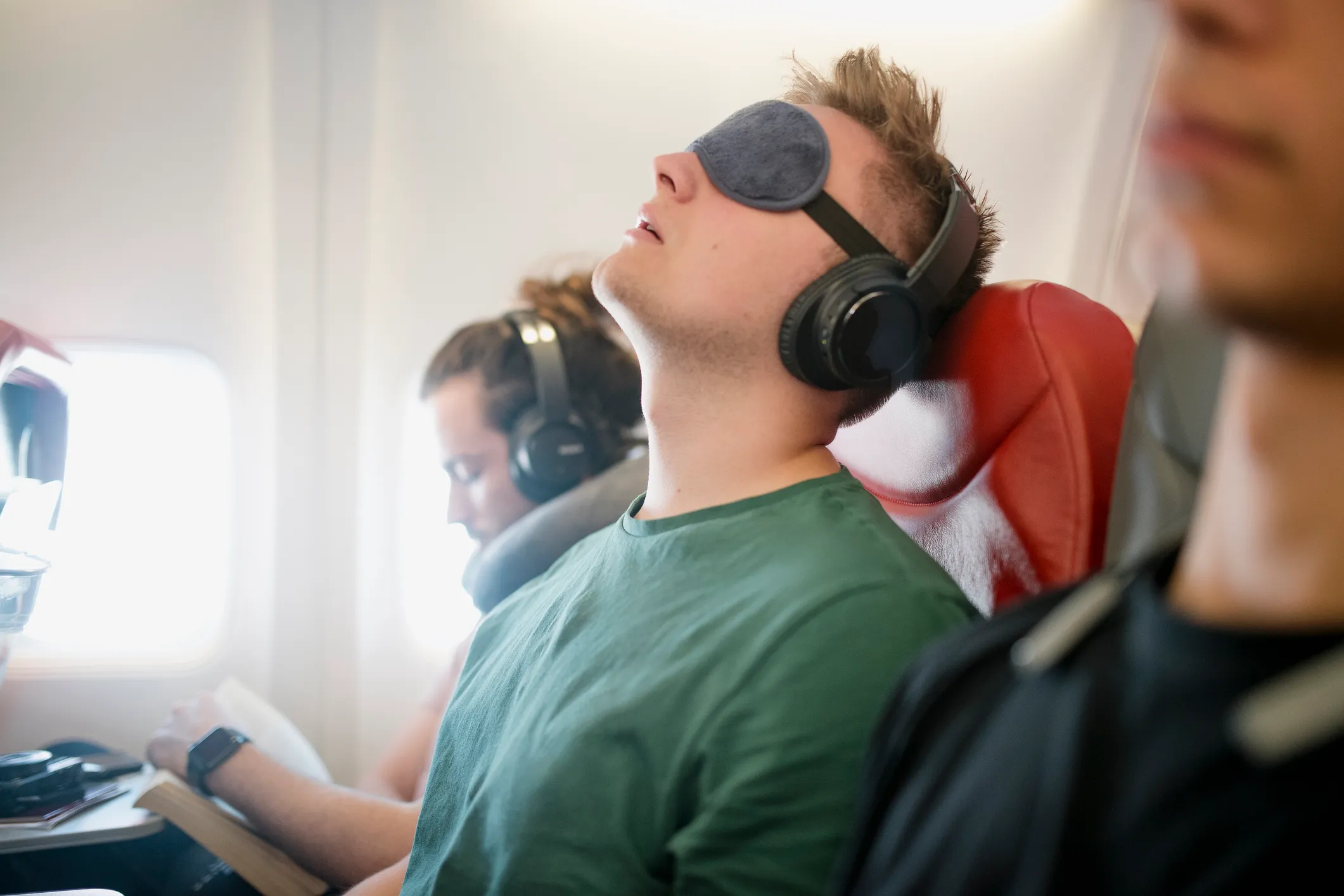Planes; the metallic vehicles which we all love to travel on! Imagine being on an aircraft having a flying phobia and on top of that dealing with ear pain. The difference in air pressure while in the air can cause eardrum pain, which is an intense piercing. Ear pain or ear blockage is caused by the rapid change in altitude, which causes the ear tissue to struggle with maintaining pressure. Pharmacists at Click Pharmacy have concluded that while in the air the auditory tubes; which are also known as the pharyngotympanic tubes are in overdrive. It is strenuous for the ears to synchronise with the constant changes in the atmospheric pressure. The trick is to make sure there is smooth circulation of air being pushed in and out of the ear at all times.
The technicalities as to why eat pain occurs can be many if you are ill with an allergy or flu and you try to force air out of the ear it can even result in a mild or a severe ear infection. Which ladies and gentlemen are, as you probably are already aware the worst?
Without further due what are three simple steps that can be taken to ensure you aren’t in such a predicament?
1) Commonly known factors, which are thoroughly practised, include swallowing, yawning, sipping on any liquid or chewing on gum while the plane is beginning to ascend or landing. The flying of the aircraft causes shifts in ear pressure throughout the journey. The practices mentioned above cause the human body to practice swallowing which allows a movement in the tubes. It also enlarges the muscles present at the back of the throat again which are connected to the Eustachian tube. Allowing atmospheric pressure to become uniform and reach a balance. Easing the discomfort caused by flying.
One of the solutions is to have a gum with you in carry-on luggage but if you can’t stand gum, then you may replace it with candy or lollipops. Production of saliva is of fundamental importance, as this will regulate the muscles in the Eustachian tube; allowing alleviation of the built pressure inside the ear. The increase in the salivary production enables more gulping which in a correlation enables the ears to stabilise pressure without struggling.
You can also practise inhaling, exhaling and swallowing and once you notice a sound of ‘pop’ in the eardrums this means it is a good sign.
2) Soft silicone earplugs which can be purchased at any pharmacy in close proximity. Making this simple purchase can save you from the calamity while thousands of feet above the ground.
The plugs allow the regulation of air pressure; inserting them while take off and descend reduces the possibility of an earache. The correct technique is to insert them into your ears 60 minutes prior to landing.
The earplugs provide a protection for the ears, the sensation of displeasure in most instances is overcome quickly, but in some cases, it can develop into a long-term complication. As an ancient saying goes, it is better to be safe than sorry. There isn’t much of a defined line between a comfortable flight and a distressed one. Surely everyone wants to avoid the later. The soft silicone plugs suppress the pressure and the noise. Experts have concluded that before inserting the plugs, it is best to grip your nose tightly and blow to clear the ears, by way of which you can avoid the ear discomfort altogether. There is also a technique approved by doctors especially specialists; it is also known as the Valsalva manoeuvre; this requires you to close your mouth pinch your nose and gradually but slowly breath out from your nose. This is a similar practice and also causes a popping of the ear clearing out any obstruction or blockage in the passages. Medical experts also stress that those individuals should know if they have any silicone allergies if so they should use ceramic earplugs. Which fulfil the same purpose but with a different material.
3) Another precautionary step that can be taken is right before your air travels take an over the counter decongestant ex; Tylenol sinus, do the same twenty minutes before landing. Decongestants provide periodical relief from any blockage in the nose. They help to open up your sinuses and will elevate the pain. They come in the form of sprays and inhalers and rid individuals from congestion and nasal catarrh the active ingredients in most is oxymetazoline hydrochloride. The effects of these do tend to last 6 – 8 hours. This will be particularly helpful if you already have an infection or allergy of any sorts, it makes sure that the mucus does not seep where it shouldn’t.
For this to work correctly don’t be asleep when your plane is about to land. A helpful tip to tackle this is to set an alarm half hour before you are due to arrive at your destination or tell the flight attendant to wake you so you can use the decongestant again along with the other useful tips mentioned above.
Try not to stress about your trip, no matter what the sensation is when the aircraft is descending. Your ears will pop eventually, and that feeling will be miraculous. If for whatever reason they don’t return to normal within the next 24 hours you are recommended to see a physician. Also, make sure if you are travelling with an infant remember to consult your doctor and while on the flight don’t forget to give them candy and keep them distracted. Being anxious about all the little things will stop you from that one flight that could have changed your life or a breather, which only you know you have truly earned. Meditate; make use of the crafts entertainment facilities, read a book. Stay serene; worst things have happened.
Safe travels.



